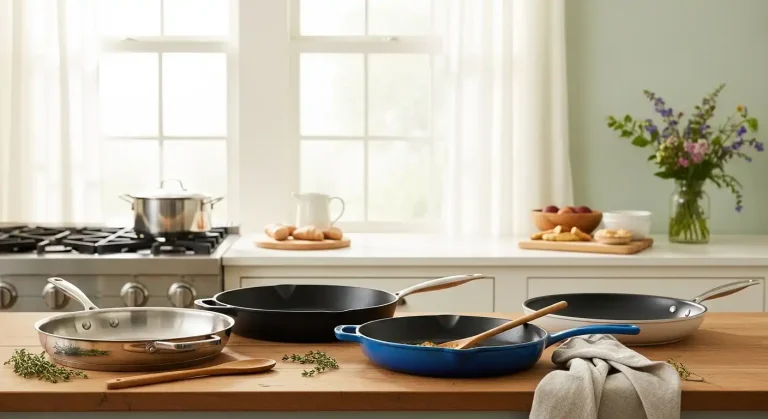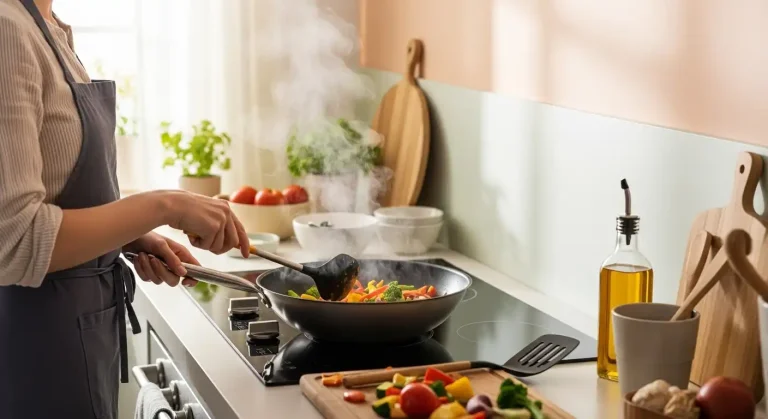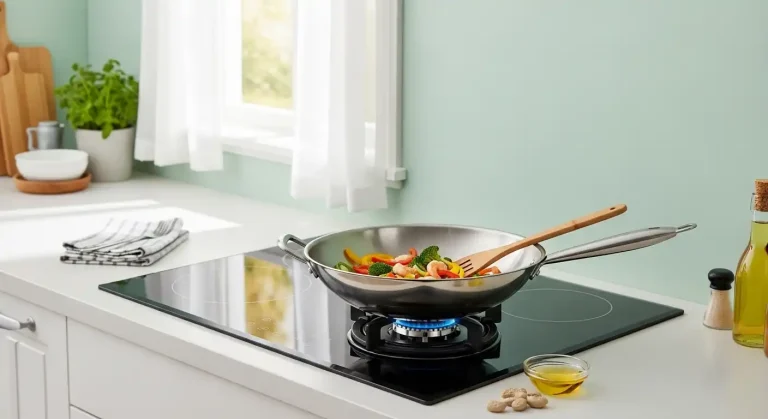Wok Vs Griddle: Choosing the Right Cookware for Your Kitchen
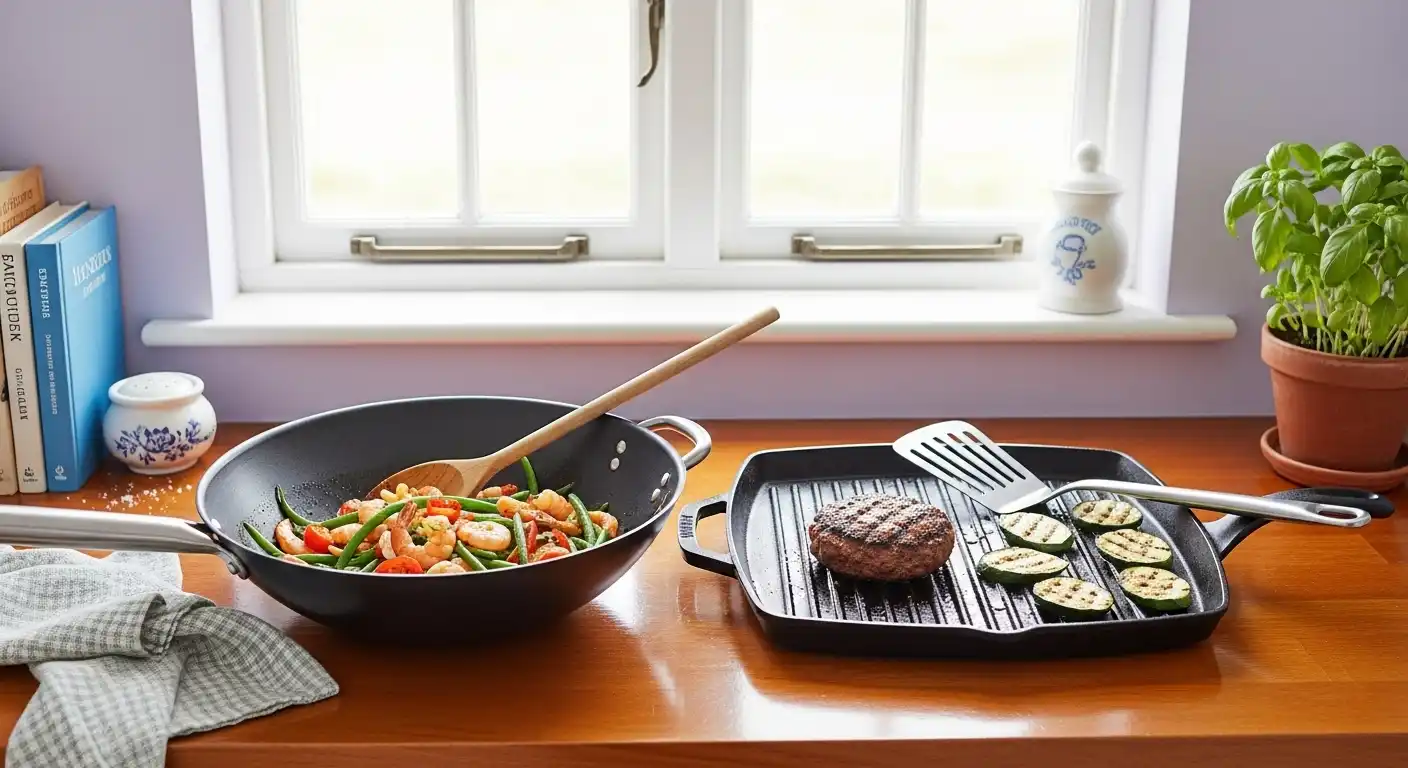
When it comes to versatile cooking tools, the debate of Wok Vs Griddle often sparks curiosity among home cooks and culinary enthusiasts. Both are powerhouse kitchen essentials, but each shines in different scenarios.
Whether you’re stir-frying vegetables or flipping pancakes, understanding their unique strengths can elevate your cooking game.
This blog post dives into the key differences, benefits, and ideal use cases of woks and griddles.
By the end, you’ll know which one suits your cooking style and kitchen setup.
What is a Wok?
A wok is a round-bottomed, high-sided pan originating from Chinese cuisine.
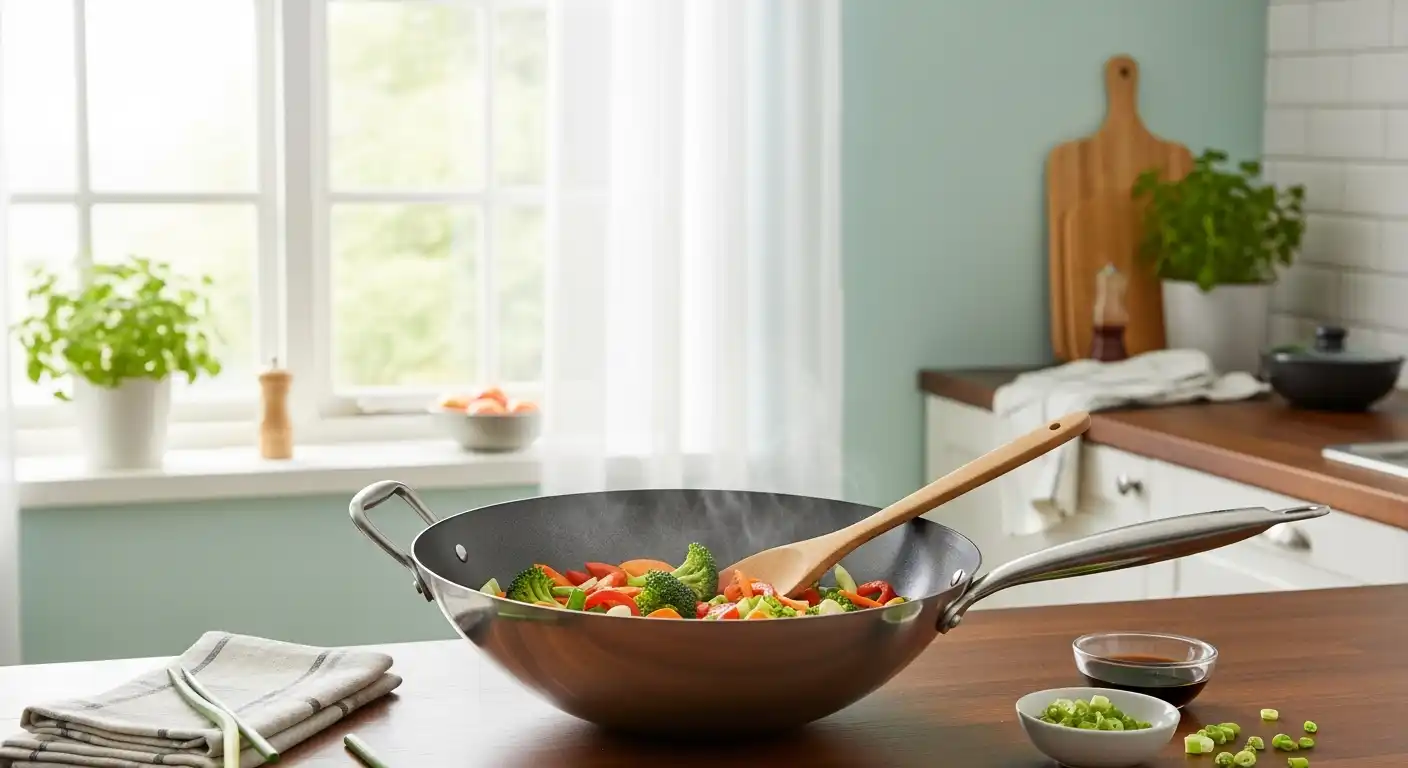
Its unique shape allows for quick, high-heat cooking, making it ideal for stir-frying, steaming, and even deep-frying.
Woks are typically made from carbon steel, cast iron, or stainless steel.
Carbon steel woks are popular for their ability to develop a natural non-stick patina over time, enhancing flavor and performance.
The sloped sides of a wok allow ingredients to be tossed easily, ensuring even cooking.
This makes it perfect for dishes like fried rice or stir-fried noodles.
What is a Griddle?
A griddle is a flat, broad cooking surface, often made from cast iron, stainless steel, or non-stick materials.
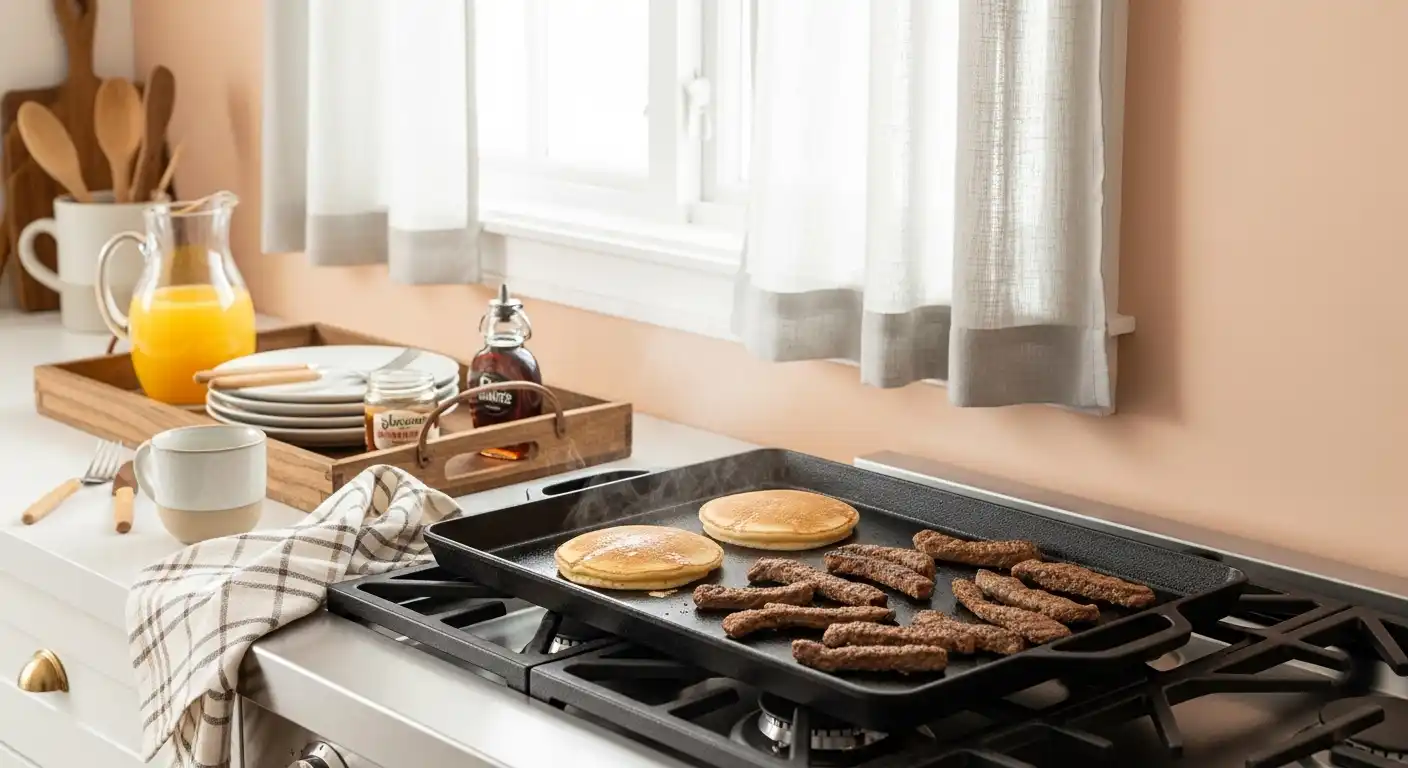
It’s designed for even heat distribution, ideal for cooking foods like pancakes, eggs, or burgers.
Griddles come in stovetop or electric versions, with some built into modern ranges.
Their large, flat surface maximizes cooking space, making them great for batch cooking or preparing breakfast spreads.
Unlike woks, griddles lack high sides, which makes them less suited for tossing ingredients but excellent for searing and browning.
Wok Vs Griddle: Key Differences
The Wok Vs Griddle comparison hinges on their design and functionality.
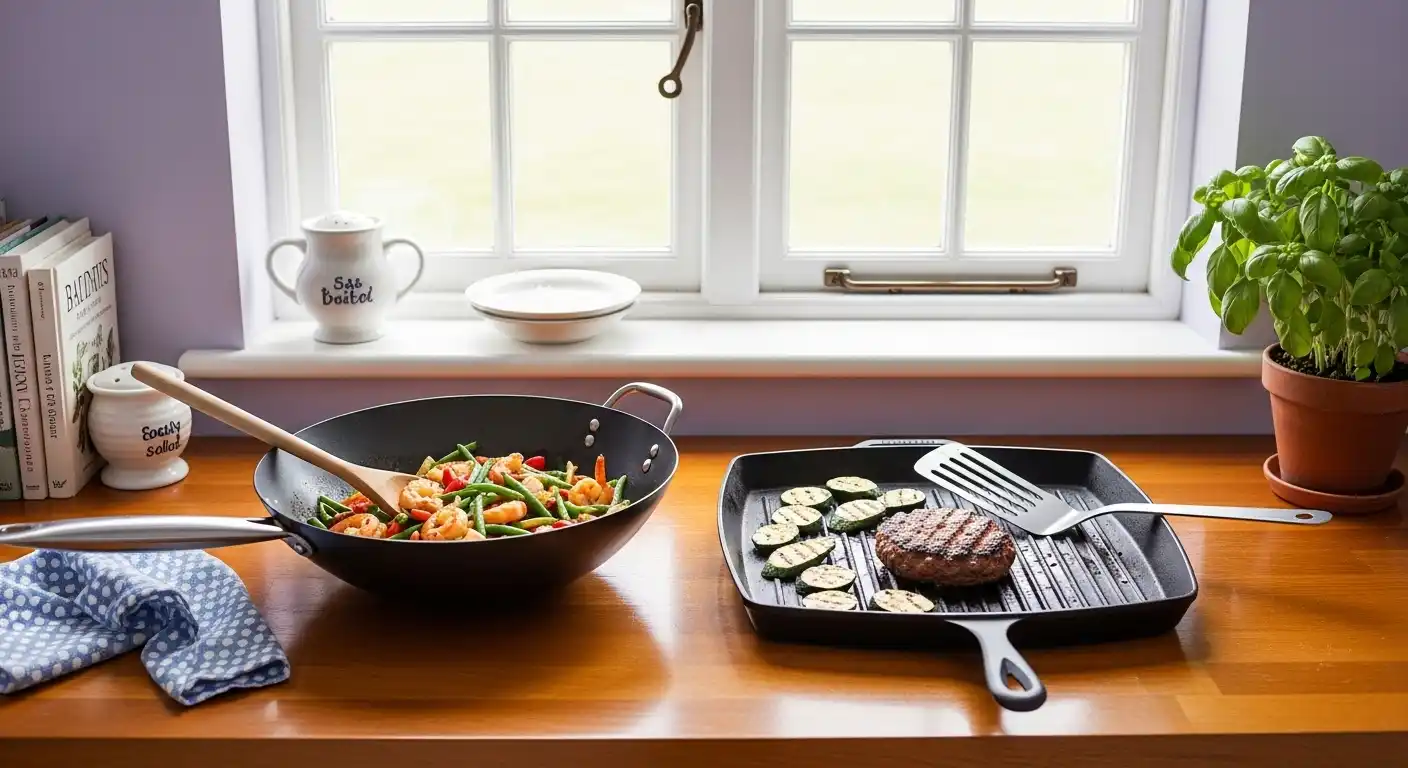
A wok’s deep, curved shape is built for high-heat, fast-paced cooking. It excels in techniques like stir-frying, where ingredients need constant movement.
Griddles, with their flat surfaces, are better for slow, even cooking. They’re perfect for foods requiring a consistent sear, like grilled sandwiches or bacon.
Choosing between them depends on the dishes you love to cook and the stovetop you’re working with.
Cooking Techniques: Wok Vs Griddle
Wok Cooking Techniques
Woks are synonymous with stir-frying, a technique that requires high heat and quick tossing.
The wok’s shape allows oil to pool at the bottom, creating a hot zone for searing meat or vegetables.
You can also use a wok for steaming, braising, or even making popcorn. Its versatility extends beyond stir-fry, as explored in what can you cook in a wok besides stir-fry.
For best results, season your wok properly.
Learn more in how to season a wok on an electric stove or how to season a wok on an induction hob.
Griddle Cooking Techniques
Griddles shine for foods that need a flat, hot surface. Think pancakes, French toast, or smash burgers.
Their even heat distribution ensures uniform cooking without hot spots.
Griddles are also great for toasting buns or grilling vegetables. Unlike woks, they don’t require constant stirring, making them ideal for hands-off cooking.
If you’re wondering about specific dishes, griddles are perfect for breakfast or brunch spreads, where you can cook multiple items at once.
Material and Maintenance
Wok Materials and Care
Woks are often made from carbon steel or cast iron. Carbon steel woks are lightweight and heat up quickly, while cast iron retains heat longer.
Seasoning is key for woks to develop a patina. This non-stick layer enhances flavor but requires proper care.
Avoid dishwashers, as they can strip the seasoning—check are woks dishwasher-safe for more details.
Cleaning a wok is simple with hot water and a soft sponge. Learn proper techniques in how to clean a wok.
Griddle Materials and Care
Griddles are commonly cast iron or non-stick coated. Cast iron griddles, like woks, benefit from seasoning to prevent sticking and enhance durability.
Non-stick griddles require less maintenance but may not handle high heat as well. Always use soft utensils to avoid scratching the surface.
Both woks and griddles need regular care to maintain performance, but woks demand more attention to preserve their seasoning.
Compatibility with Stovetops
Woks on Electric and Induction Stoves
Using a wok on modern stovetops can be tricky. Round-bottom woks often require a wok ring for stability on electric or gas ranges.
Flat-bottom woks are better suited for glass-top stoves or induction cooktops.
Check out how to use a flat-bottom wok on an electric stove for tips.
Griddles on Modern Stoves
Griddles work seamlessly on most stovetops due to their flat design.
They’re also compatible with induction cooktops if made from ferromagnetic materials.
No special accessories are needed, making griddles more straightforward for modern kitchens.
Heat Distribution and Cooking Speed
Woks heat up quickly, concentrating heat at the base. This allows for rapid cooking, ideal for stir-fries where ingredients cook in minutes.
Griddles distribute heat evenly across their surface, which is great for consistent cooking but takes longer to heat up.
The choice between wok and griddle here depends on whether you prioritize speed or consistency.
Versatility in the Kitchen
Woks are incredibly versatile. Beyond stir-frying, they can handle deep-frying, steaming, and even cooking rice.
Griddles are less versatile but excel at specific tasks like grilling, searing, and batch cooking. They’re not ideal for high-heat tossing or liquid-based cooking.
For unique dishes, a wok might be the better choice. Explore wok vs frying pan for a deeper comparison.
Space and Storage Considerations
Woks are compact and easy to store, fitting neatly in most kitchen cabinets. Their round shape can save space compared to bulkier cookware.
Griddles, especially stovetop versions, are larger and heavier, requiring more storage space. Electric griddles may need dedicated counter space.
Consider your kitchen’s size and storage capacity when choosing between the two.
Wok Vs Griddle: Which is Right for You?
If you love Asian-inspired dishes, high-heat cooking, or versatile techniques, a wok is your go-to. Check out what wok should I buy for guidance.
If breakfast foods, burgers, or large-batch cooking are your focus, a griddle’s flat surface is ideal. It’s perfect for consistent, even cooking.
Your cooking style, stovetop type, and kitchen space will guide your decision.
Final Thoughts
The Wok Vs Griddle debate comes down to your culinary needs. Woks offer speed and versatility for dynamic, high-heat cooking. Griddles provide even, consistent heat for flat-surface dishes.
Both are fantastic tools, but their differences make them suited for distinct tasks. Consider trying both to expand your cooking repertoire.
For more insights, explore wok vs cast iron skillet or wok vs stir fry pan to refine your choice.

